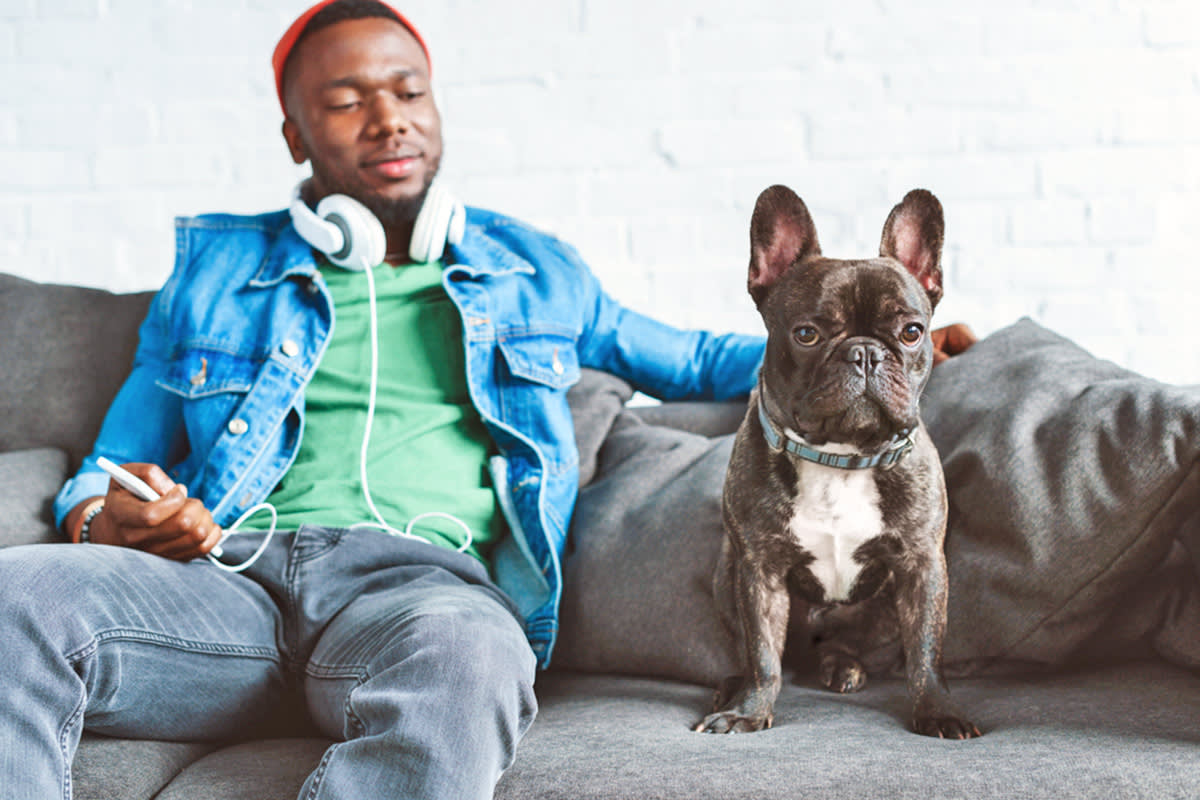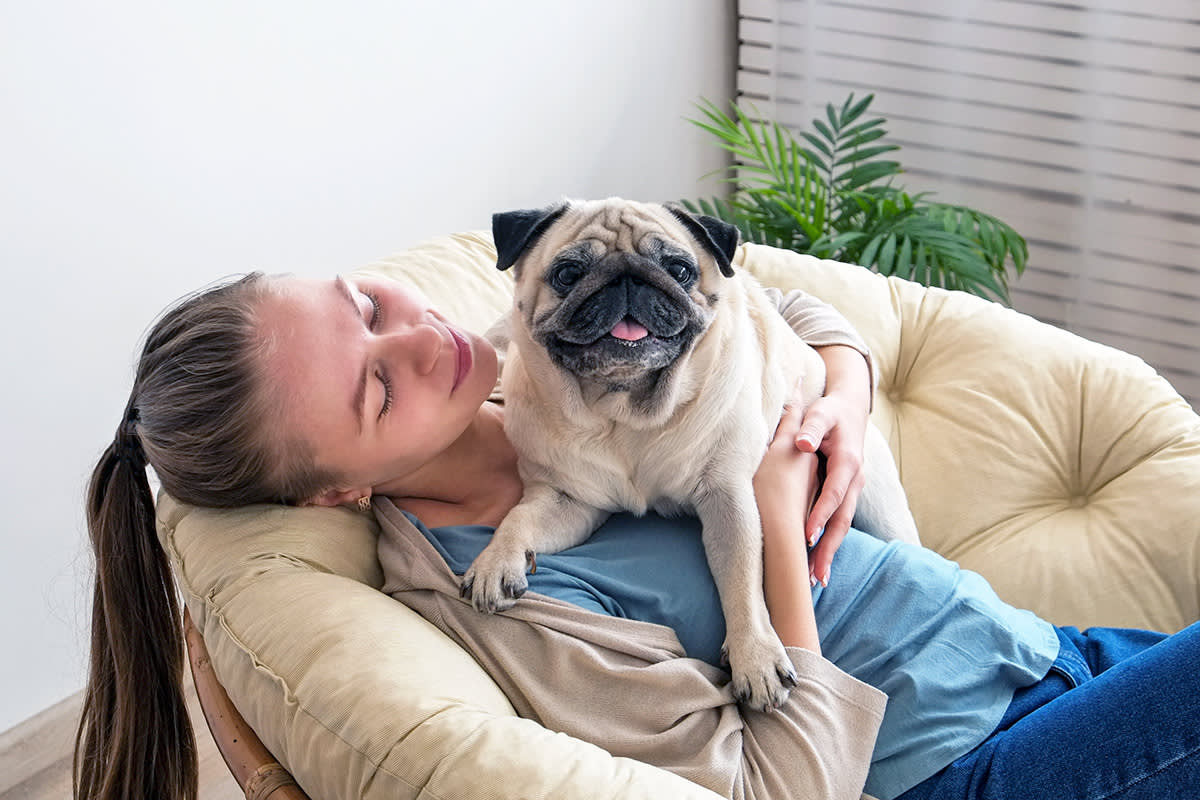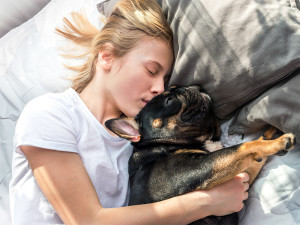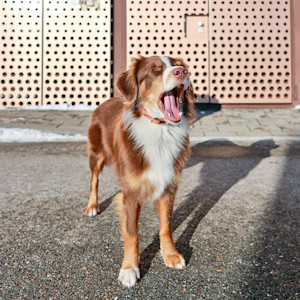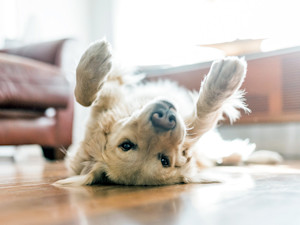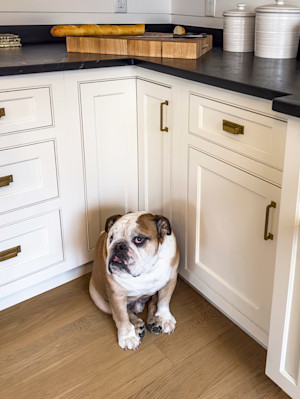What Is “Snurfling,” and Why Do Dogs Do It?
Not all dogs make this noise, but you know it when you hear it.
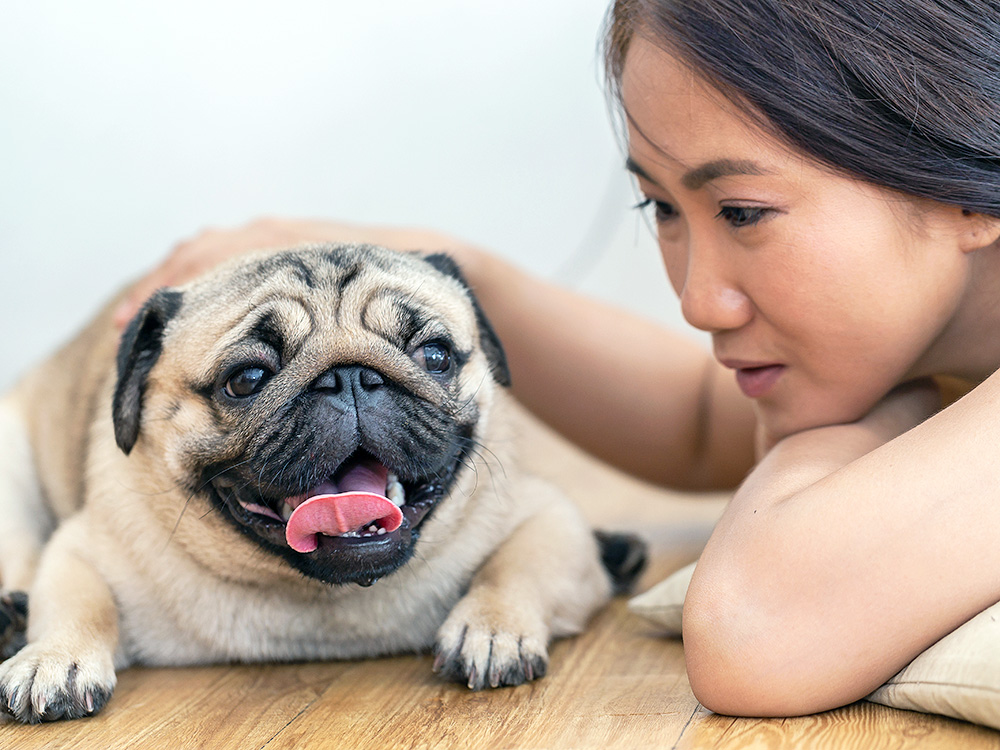
Share Article
Who needs a noise machine when you have a dog? Every day, our pups bless us with a magnificent soundscape — from the light ringing of their ID tags as they run around the house, to their boisterous barking at mealtime, to the inquisitive little chirps they make when we’re holding a delectable-looking treat.
But there is one sound that is a little more mysterious. This kinda cute, kinda gross snorting sound seems to be limited to certain breeds of dogs, but the ones that do it seem to do it all the time. Have you ever heard it? Imagine something between a snort and a sniffle, usually emitted when a dog is grooming themselves or chowing down on a hearty meal they really, really like.
Apparently, there’s a name for this sound, and it’s just as endearingly bizarre as the noise itself. It’s called “snurfling” — and while it’s not usually cause for concern, if your dog never used to do it and has suddenly started, it could be a red flag. Here, we delve into the bizarre word (and noise) and what it could mean for your pup.
What, exactly, is snurfling?
You’ll be shocked to hear that “snurfling” is not an official veterinary term, but basically, it’s a combination of “sniffling” and “snarfing.” It’s a noise our dogs make when they’re eagerly investigating something.

According to veterinarian Matthew Murdoch, founder of Ferndale Kennelsopens in new tab, this behavior is most common “during sniff-heavy activities like mealtime.” You might also notice your dog doing it while licking their own leg, or as they investigate some fascinating new splotch on the rug.
Why do dogs “snurfle”?
As with most doggie behaviors, it depends.
Certified professional dog trainer Courtney Bayer reckons that different situations can prompt increasing “levels” of snurfling: “I have a number of dogs that need to do a thorough sniffspection of me when I come in the door because I smell like so many other dogs. This results in a lot of chuffing, snorting and long loud sniffs in and out as the dog clears odor from the nasal passage in order to take in new scents.”
If Bayer drops treats on the ground, she says, “the snuffling escalates to snurfling as they are processing smells, sniffing out the treats and gobbling them up at the same time.”
Dr. Jerry Klein, a veterinarian at Corey’s Canine Corneropens in new tab confirms that snurfling can be a way for dogs to communicate. In some cases, Klein adds, it can signal an allergic reaction — one of many reasons it’s crucial for pet parents to know what their dog’s “normal” looks like.
Murdoch notes that a dog’s sense of smell is at least 10,000 times more sensitive than a human’s — which means that when a dog is snurfling, they’re probably “overdosing” on a new scent, rapidly inhaling and exhaling “to get a better smell and feel for the object.” Cute!
Why do certain dog breeds “snurfle” more than others?
Anatomically speaking, some dogs are more likely to produce this sound because of their nasal structure. That’s why you might have noticed that some flat-faced dogs, like Pugs and Frenchies, are more prone to this behavior than others. (That said, Bayer has also noticed this behavior in “big, drooly Labs and Great Danes.”)
Murdoch explains that flat-faced dogs tend to have a longer soft palate, smaller nostrils, and more soft tissue in their skulls — “and so just like sucking in and out of a straw is much harder than sucking or blowing in and out of a snorkel, it’s harder for them to breathe with their noses.” Because of this, Murdoch says, flat-faced dogs tend to sniffle and snurfle more often (and more audibly) than other breeds.
Bayer’s explanation is a little more… evocative. “When licking and sniffing is combined into one activity,” she says, “the dog is going to produce more saliva, swallowing and breathing more heavily while sniffing at the same time. Add the excitement of meal time or a special lick-y treat, and sometimes, it can sound like a passel of hogs is in your kitchen, rather than one dog.”
As someone who has dubbed her own snorty dog “The Havanese Hog,” this assessment feels particularly apt.
Is “snurfling” ever dangerous?
For dogs who snurfle all the time, rest assured, everything is probably fine. According to Murdoch, “it’s just a habit” — not a cry for help.
That said, Murdoch adds, some loud respiratory noises can signal a deeper issue. If you notice your dog making a high-pitched, harsh sound when breathing in, that’s called “stridor,” and if you notice a low-pitched, snoring-like sound while they’re breathing, that’s called “stertor.” Both of these noises can indicate that your dog’s airways are at least partially obstructed. Consult your veterinarian and try to keep your dog from becoming overweight to avoid further complications.
And if your dog suddenly starts snurfling when they never did so before, Klein says that’s also worth investigating.
“Any time there is a change in your dog’s behavior, such as suddenly beginning “snurfling” or snorting, or a sudden increase in it’s frequency or intensity, it’s best to consult with your veterinarian,” Klein says. “While ‘snurfling’ can be common in some dogs, including brachycephalic breeds, there can be other causes for it.”
Knowing how your dog normally looks and acts can better inform your understanding of new behaviors. If your dog suddenly starts snurfling or begins doing it more than they normally do, Klein warns that they might be dealing with serious health issues like allergies, growths, or a collapsing trachea. They also might have ingested something they shouldn’t have. Once again, it’s best to consult your vet as soon as possible.
Whenever you notice something amiss with your dog, Klein recommends recording a video of the behavior. “That way you can show your veterinarian exactly what your dog is experiencing, rather than just trying to explain it to them.”
As Bayer notes, “snurfling” can occasionally signal problems you’d never expect, which is why it’s important not to ignore new behaviors — no matter how benign they might seem.
On one occasion, Bayer says, “We discovered that one dog client of mine needed knee surgery when she suddenly started snurfling her face into our legs and the couch after a walk, rolling in the grass excessively, and the hair pattern on her bad leg changed.”
The lesson here? “Your dog talks with their body,” Bayer says, “and it's our job to listen.”
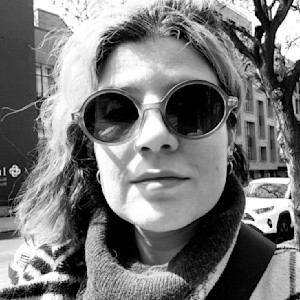
Laura Bradley
Laura is a New York-based experienced writer and mom of two rescue pups. Her work has appeared in Slate, Vanity Fair, Daily Beast, The Washington Post, The Atlantic, Yahoo! News, Vulture, Grazia Magazine, and more. When she is not writing or walking the pooches, you will probably find her in the community garden.
Related articles
![Girl sleeping with her French Bulldog dog in bed.]()
A New Study Finds Flat-Faced Dogs Get Pretty Crappy Sleep
It’s one of several health problems facing brachycephalic breeds.
![Brown dog outside yawing.]()
10 Surprising Ways You Can Decode Your Dog’s Body Language
All their little movements mean a lot.
![Cute Golden Retriever rolling on the floor at home.]()
5 Reasons Your Dog Is Obsessed With Rolling Around on the Floor
It looks super wacky, but they obviously don’t care.
Why Does My Dog Cry in Their Sleep?
Learn about the causes and what to do.
Every Dog’s Biggest Need, According to Their Breed
Because those animal instincts run deep.
![Guilty looking Bulldog at home in the kitchen.]()
The Real Reason Your Dog Is Leaving You That “Revenge Poop”
Are they really mad at you?
